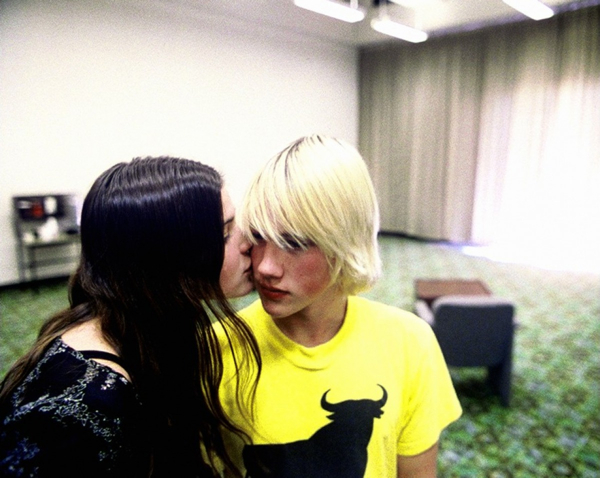Movie review by Greg Carlson
Winner of numerous critical accolades, including Best Director and Palme d’Or honors at the 2003 Cannes Film Festival, Gus Van Sant’s “Elephant” is one of the year’s most thought-provoking movies, and also one of its most frustrating. Inspired by the 1999 Columbine school shooting (as well as taking cues from several other high profile instances of inexplicable teenage violence), “Elephant” is not the sort of cinematic experience one typically claims to enjoy watching – even though seeing it is disturbing, engrossing, and occasionally harrowing. With its cast of unknown non-actors (most of whom essentially play themselves, or rather, characters that share their real names), “Elephant” bears the mark of an experiment, and like many experiments, its results can be simultaneously exhilarating and disappointing.
Along with cinematographer Harris Savides, Van Sant uses his camera to merely observe the commonplace events that unfold daily at public and private high schools across the nation. During the entire first act of the drama, long takes (often provided by intimate, floating tracking shots that follow individuals as they traverse the grounds and hallways of the high school setting) introduce us to a series of young people. There’s John (John Robinson), an angelic, golden-haired boy who arrives late to class thanks to his irresponsible, alcoholic father (Timothy Bottoms). We meet Elias (Elias McConnell), an aspiring photographer who develops pictures in the school’s darkroom. Nerdy Michelle (Kristen Hicks) is chastised by the gym teacher for failing to wear the required uniform to class. And so on.
A dark cloud hangs over the introduction of these young people, and Van Sant intensifies the focus of the audience by doubling back and repeating several moments from different points of view. This repetition colors the details with an eerie sense that many of the faces we are seeing will be lost to the impending assault. At the end of these languid, quiet intros Van Sant shows another long tracking shot – but this one, a low-angle, from-behind look at two boys dressed in paramilitary fatigues carrying duffel bags weighed down by firearms – shatters the serenity of Van Sant’s preceding “fly on the wall” surveillance. The effect of the shot is dizzying, as it finalizes the director’s refusal to “explain” the shocking violence that will unfold in the latter sections of the movie.
Sadly, Van Sant’s strongest risks prove to be the film’s major liabilities, and the weakest aspect of “Elephant” is the offhand way in which the two killers are portrayed. While one brief scene shows Alex (Alex Frost) being humiliated by some bullies who shower him with spitballs, most of the time we spend with him is opaque: he plays the Moonlight Sonata on the piano, he eats pancakes with his friend (and fellow conspirator) Eric (Eric Deulen), he watches documentaries on Nazi Germany and Hitler, etc. Van Sant is totally correct in assuming that any attempt to account for the killers’ motivations would fall short of the intrigue provided by remaining aloof and enigmatic. Therein, however, lies the rub – “Elephant” leaves us disoriented and more than a little bit nauseous, but the detachment and disaffection instills a sense of helplessness that teeters on the edge of hopelessness.
